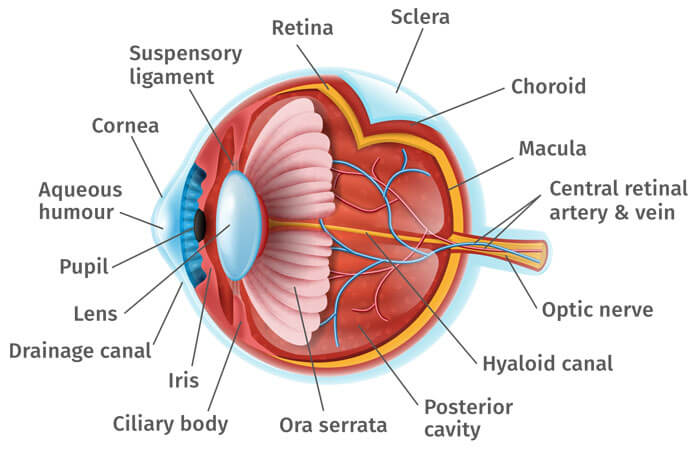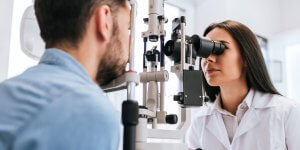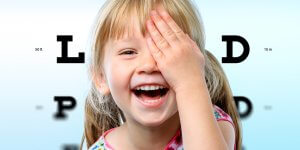Learn more about pediatric eye care
What is pediatric eye care? Conditions, treatment options and more!

At a Glance:
Things to know and remember:
- Proper eyesight is fundamental to your child’s social and educational success as well as their ability to clearly focus on their surroundings. It’s never too early to learn about and combat the onset of eye disease in your child.
- Orthoptic therapy is an individualized treatment program prescribed to eliminate or improve conditions such as lazy eye (amblyopia), crossed eyes (strabismus), focusing, eyeteaming and tracking disorders. Special lenses, prisms, filters and instruments are used, along with an advanced computer system.
From comprehensive care to highly specialized treatment of your child’s condition, the pediatric specialists at Eye Consultants of Pennsylvania offer a full range of eye care services for infants, children, and young adults.
About Pediatric Eye Care Conditions
What is Strabismus?
With strabismus, the eyes are not aligned correctly. One eye looks at the target while the other eye can be turned inwards (esotropia), outwards (exotropia), or upwards (hypertropia). Misalignment of the eyes may occasionally be a sign of serious underlying ocular or neurologic problems. Strabismus is best treated in early childhood to have the best chance of developing normal binocular vision. Esotropia is often associated with visual loss caused by amblyopia, which also must be treated in order to have the best possible visual development.
The treatment of strabismus depends on the patient’s type of strabismus and must be tailored to the individual child. Treatments include glasses, eye exercises, and eye muscle surgery. During strabismus surgery, the muscles that move the eyes are weakened or strengthened in order to align the eyes properly. Treatment of strabismus can greatly improve a patient’s appearance and binocular vision.
Symptoms & Treatment
Symptoms and treatment for Accommodative Esotropia
Your child has been diagnosed with accommodative esotropia. This is a common condition which tends to occur in children two years of age or older.
Symptoms
Esotropia means the eyes are turned inward relative to each other.
You may notice the inward turning of the eye at all times or only sometimes. The inward turning may be more noticeable when your child looks at things up close.
You may notice that either eye turns in. However, in some children it appears that only one eye turns inward.
Accommodative indicates that the inward turning of the eyes is caused by the child focusing (accommodating) his or her eyes. A farsighted child can focus his or her eyes to adjust for the farsightedness. However, the focusing effort required to see clearly causes your child’s eyes to cross.
Therefore, the amount of in-turning varies with the amount of effort with which your child is focusing. Some children with accommodative esotropia avoid having their eyes cross by rarely focusing their eyes. However, when they see a small, interesting object these children will focus their eyes in order to see clearly, and their eyes will cross. Sometimes a child will close an eye in order to avoid seeing double when that eye turns inward.
Treatment
Glasses, patching and surgery are the most common treatments.
Glasses – Glasses appropriate to your child’s farsightedness are given to reduce the focusing effort needed to see clearly. Therefore, while wearing the glasses your child can see clearly without his or her eyes crossing. It is important that your child wears his or her glasses at all times. Bifocals may be prescribed if your child still has a significant amount of esotropia for close work even while wearing “regular” glasses.
A child who does not wear glasses will continue to cross his or her eyes. It is felt that children whose eyes are not aligned will eventually lose the ability to use their eyes together. At this point glasses will not correct the esotropia and surgery will be necessary.
Patching – If your child has amblyopia, or “lazy eye,” then patching is necessary in order to improve the vision in the amblyopic or “lazy” eye. A child with untreated amblyopia will never be able to use their eyes together and will not have a good long-term result.
Surgery – In some children glasses improve but do not completely correct the inward turning of the eyes. If the eyes are not straight while wearing the proper glasses then surgery may be considered.
Does my insurance plan
cover my eye care?
Find out what insurance we accept and what is covered by insurance.
Learn more about our pediatric eye care specialists
Physician information including education, training, practice location and more.
Schedule an Appointment
Schedule an appointment with one of our specialists.





